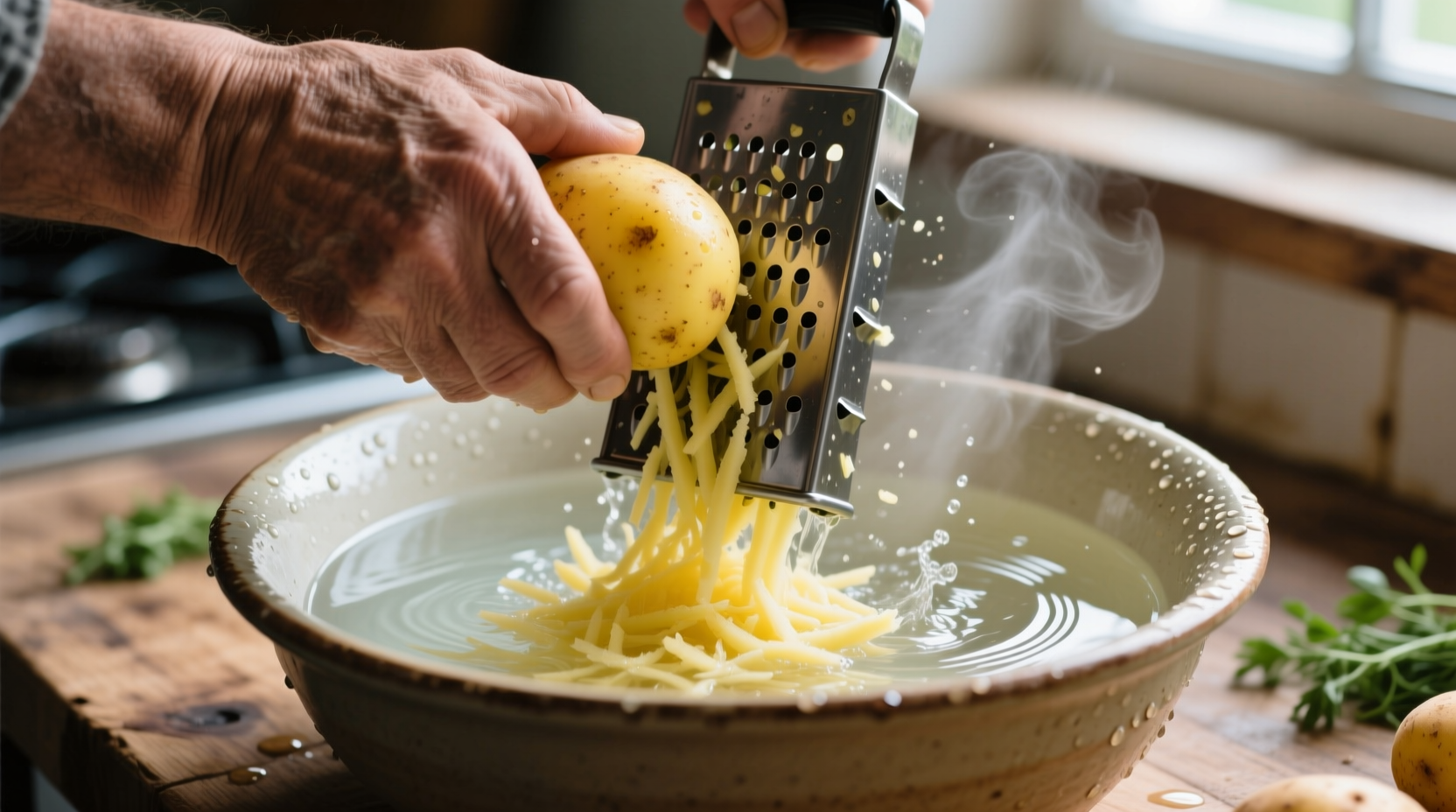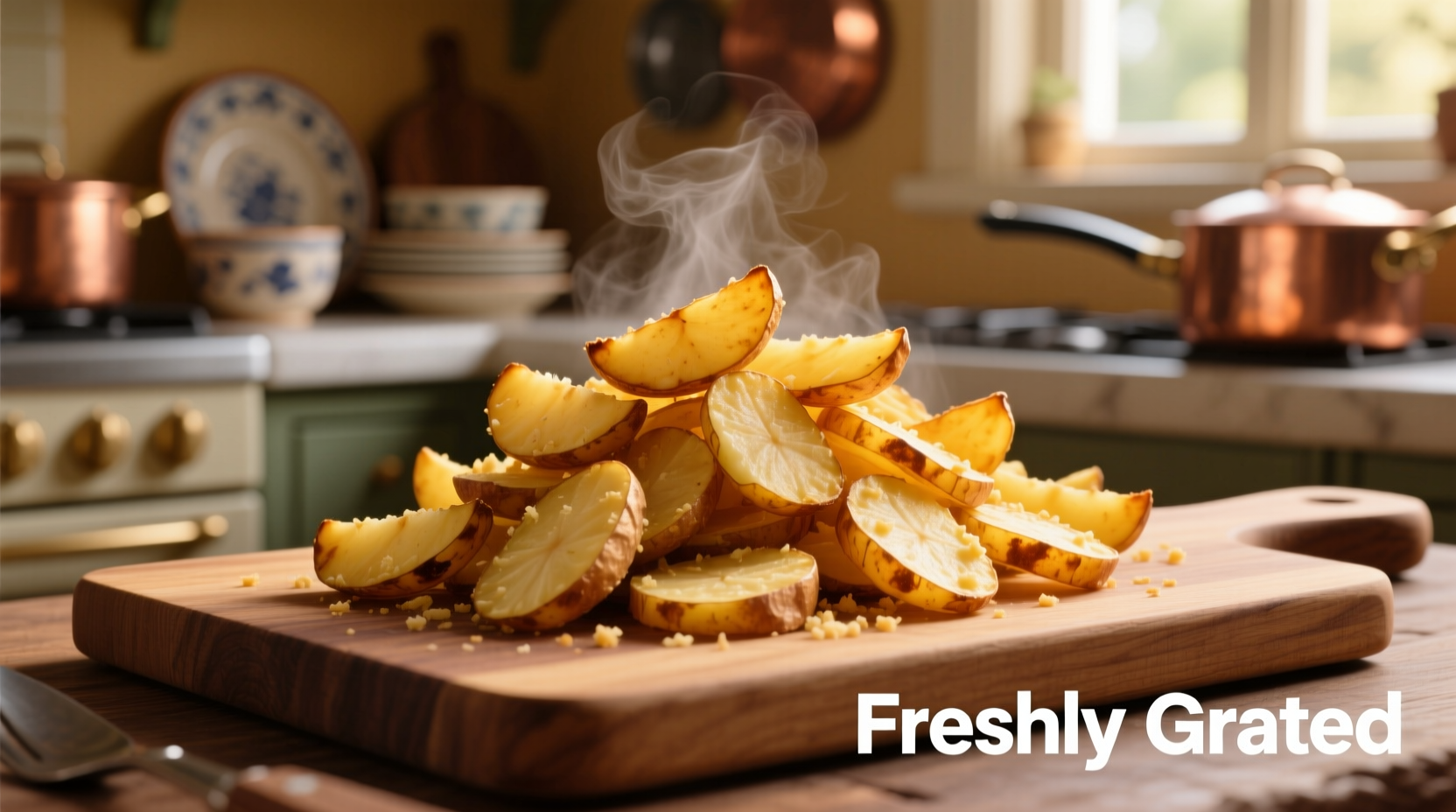When you reach for potatoes to grate, understanding the science behind starch management and texture can transform your cooking results. Unlike shredded potatoes which maintain longer strands, grated potatoes create a fine, almost paste-like consistency that's essential for specific dishes where binding and crispness are crucial. This guide reveals professional kitchen insights that home cooks often miss, helping you avoid common pitfalls like oxidation and inconsistent texture.
Why Grated Potatoes Matter: Texture Science Explained
The difference between grated and shredded potatoes isn't just visual—it's chemical. Grating breaks down more cell walls, releasing starch that acts as a natural binder. This starch release is why grated potatoes work better for dishes like latkes and boxty where you need the mixture to hold together without additional binders. According to research from the University of Minnesota Extension, potatoes contain 15-20% starch by weight, and how you handle that starch determines your final texture.
Selecting the Perfect Potato Variety
Not all potatoes grate equally well. The ideal candidates have higher starch content and lower moisture:
| Potato Variety | Starch Content | Best For | Grating Tip |
|---|---|---|---|
| Russet (Idaho) | High (20-22%) | Latkes, hash browns | Chill before grating for cleaner cuts |
| Yukon Gold | Medium (16-18%) | Potato pancakes, croquettes | Use immediately after grating |
| Red Potatoes | Low (14-15%) | Not recommended for grating | Better suited for boiling or roasting |
Professional Grating Techniques You Need
Follow these steps for perfect grated potatoes every time:
- Prep properly: Wash potatoes thoroughly and peel if desired (peeling creates finer texture)
- Chill first: Refrigerate for 1-2 hours—cold potatoes grate cleaner with less breakage
- Choose your tool: Box grater (medium holes) for most applications, food processor with grating disc for large batches
- Work quickly: Grate directly into bowl of cold water to prevent oxidation
- Rinse starch: Swish grated potatoes in water, drain, and repeat until water runs clear
- Squeeze dry: Use cheesecloth or clean kitchen towel to remove excess moisture

When to Choose Grated Over Shredded Potatoes
Understanding context boundaries prevents recipe failures. Grated potatoes excel in specific applications where their fine texture provides advantages:
- Latkes and potato pancakes: The fine texture creates better binding without excessive egg
- Certain dumplings: Like Polish placki where crisp exterior is essential
- Binding agent: In meatloaf or veggie burgers where moisture control matters
- Thickening: For soups and stews where smooth texture is desired
Conversely, avoid grated potatoes when you need distinct potato strands like in rösti or when making potato nests for presentation. Food science research from Kansas State University's Food Safety program confirms that grated potatoes release 40% more starch than shredded, dramatically affecting final texture.
Storage Solutions That Actually Work
Preventing browning in grated potatoes requires understanding the oxidation process. The enzyme polyphenol oxidase causes browning when exposed to air. Here's how to combat it:
- Water method: Submerge in cold water with 1 tablespoon lemon juice or vinegar per quart
- Time limits: Maximum 24 hours refrigerated (beyond this, texture deteriorates)
- Freezing: Blanch grated potatoes for 2 minutes, cool, then freeze in portions
- Commercial use: Restaurants often use ascorbic acid solutions (1%) for longer storage
Top 3 Recipes That Demand Grated Potatoes
These dishes specifically require grated—not shredded—potatoes for authentic results:
- Traditional Latkes: The fine texture creates the signature crispy exterior while maintaining moist interior. Squeeze grated potatoes thoroughly before mixing with minimal binder.
- Irish Boxty: This potato pancake requires half-grated, half-mashed potatoes for proper texture. The grated portion provides structure while mashed adds creaminess.
- Korean Gamja-jeon: Potato pancakes where the fine grated texture allows for thin, crispy results without additional starch.
Troubleshooting Common Grating Problems
Fix these frequent issues with professional solutions:
- Browning despite water: Increase acid ratio (more lemon juice) or use filtered water (chlorine accelerates oxidation)
- Mushy texture after cooking: You didn't squeeze out enough moisture—aim for 70% moisture removal
- Sticking to grater: Chill both potato and grater, or rub grater surface with oil before starting
- Inconsistent texture: Use consistent pressure and replace dull box graters regularly
Advanced Technique: The Double-Grate Method
For restaurant-quality results, try this professional technique:
- Grate potatoes using medium holes
- Rinse thoroughly in cold water until clear
- Squeeze dry with towel
- Refreeze grated potatoes for 30 minutes
- Grate again using fine holes
This double-grating process creates an ultra-fine texture perfect for delicate potato pancakes where traditional single-grating would be too coarse. The brief freezing step hardens the potato strands, allowing for cleaner second grating without turning to mush.











 浙公网安备
33010002000092号
浙公网安备
33010002000092号 浙B2-20120091-4
浙B2-20120091-4